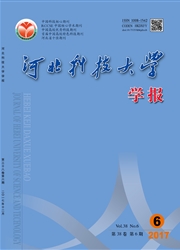

 中文摘要:
中文摘要:
分析了近年来传统TPA(transfer path analysis,TPA)、运行工况TPA(operational TPA,OTPA)、OPAX(operational-X TPA)以及混合TPA方法的基本原理、优势和不足以及工程应用,阐述了功率流法在TPA领域的潜在应用;重点针对OTPA方法,考虑了参考点距离的影响,设计了辐射球声源声传递路径仿真系统和激振器激励矩形板振动传递路径实验系统。结果表明:OTPA值与理论值和实验值的相对误差分别小于5%和8%,与此同时,OTPA方法对噪声很敏感,当噪声较小时,较近参考点有利于提高OTPA方法的精度,因此,应合理布置传感器和设计运行工况;最后,对TPA方法的发展趋势进行了展望。
 英文摘要:
英文摘要:
Firstly,the basic principles,the advantages,the disadvantages and the engineering applications of the conventional TPA,OTPA,OPAX and mixed TPA in recent years are comprehensively analyzed.Meanwhile,the potential applications of power flow in the TPA field are especially discussed.Secondly,focused on the OTPA method,an acoustic transfer path system by spherical radiation transfer path simulation system and a vibration transfer path experiment system by a rectangular plate vibrator excitation are designed considering the effects of the distance from reference points.The results show that the relative error between the OTPA values and the theoretical values as well as the experimental values is less than 5%and 8%respectively.At the same time,OTPA is sensitive to noise.When the noise is lower,the nearer reference points can improve the precision of OTPA method.Therefore,it is needed to arrange sensors and design operating conditions reasonably.Finally,the development trend of TPA method is presented.
 同期刊论文项目
同期刊论文项目
 同项目期刊论文
同项目期刊论文
 期刊信息
期刊信息
